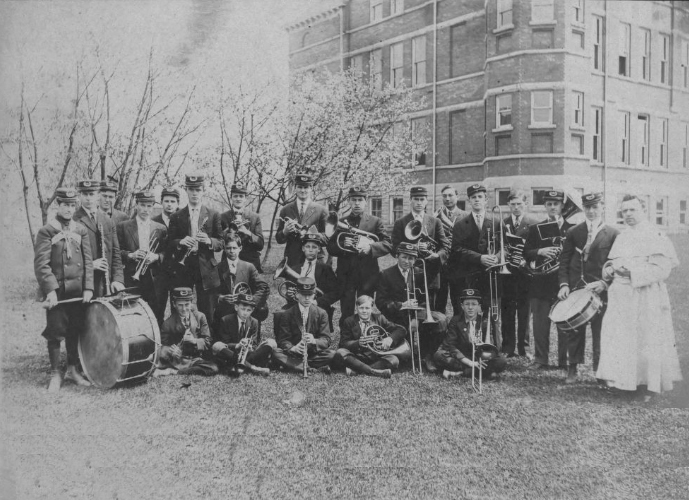
By Kris Leonhardt
Editor-in-chief
Continued from previous week
In April 1903, a high mass and dedication celebrated the structure that was to make St. Norbert College one of the “most up-to-date institutions for young students in this state” at that time.
In 1904, the college began promoting three-month evening courses in business — bookkeeping, shorthand, typewriting, arithmetic, penmanship and rapid calculation — for $7 and elementary — reading, spelling, arithmetic, penmanship and grammar — for $5, led by Professor J.H. Fitzsimmons.
The 1905-06 brought in two new professors from Notre Dame and high expectations for a large enrollment, which proved true with the student body increasing by numbers as well as state reach.
The school remodeled its boathouse to serve as a gym for students “to pass the long winter evenings.”
By the 1909-10 school year, enrollment was up to 85 students, with the majority coming from the Michigan upper peninsula, Green Bay and De Pere.
On Wednesday, Feb. 12, 1913, a fire struck the first floor of the college facility with two alarms sending firefighters to the building.
Students were led to the gymnasium after being aroused from bed.
Newspaper accounts say it took the firemen about an hour and a half to put out the fire that had originated in one of the classrooms.
There was heavy damage to a large area of the building, but it was fully insured.
On Sept. 24, 1916, the cornerstone was laid for Francis Boyle Hall — a four-story building with a recreation hall and stage, dormitory and assembly hall — with plans for occupancy the following September.
Boyle served as the endower for the new facility and was present to lay the cornerstone.
Work was also being completed that fall on a boiler house that would furnish heat to all of the college buildings, as well as the church facilities.
By the 1917-18 school year, 155 students were enrolled at the college.
Advertisements promoted the college as a “select Catholic boarding and day school for boys and young men desiring a classical, high school or commercial education, combined with a much-needed moral training.”
The school year ended early that May due to the “inevitable war-time conditions.”
In 1920, the college started a subscription drive to raise $300,000 for a new science hall, which would include labs for chemistry, biology and physics, as well as a library.
Father DeVries told the community that a new science hall was “absolutely necessary if the college is to be permitted to expand and absolutely essential for a complete collegiate course,” a Press-Gazette article stated.
Continued in next week’s edition
